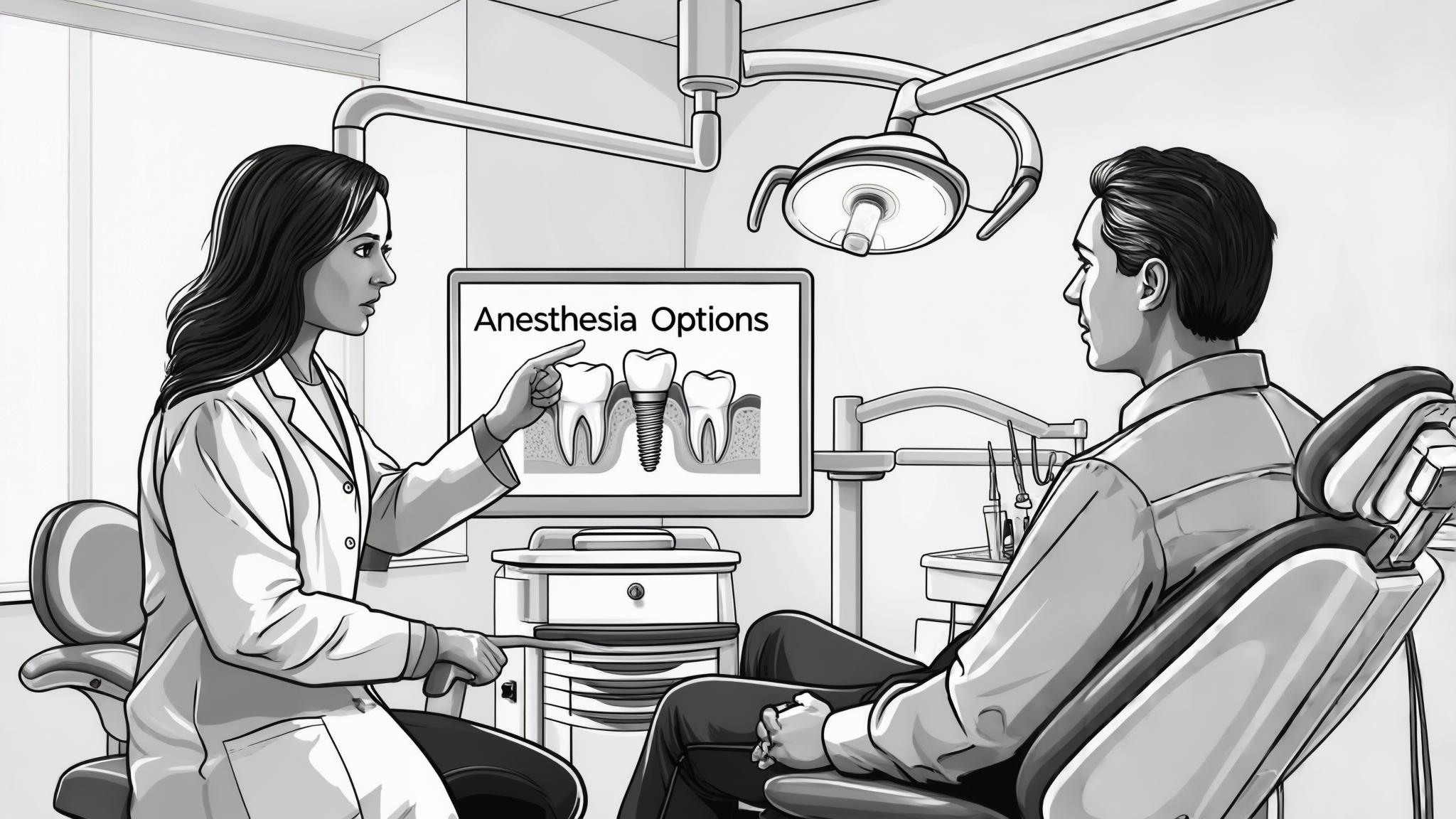Understanding Dental Implants
What are dental implants?
Dental implants are a popular solution for replacing missing teeth. Imagine them as artificial roots that anchor replacement teeth securely into your jawbone. Components of dental implants typically include three parts: the implant itself, which is a titanium post; the abutment, which connects the implant to the crown; and the crown, which is the visible part that looks like a natural tooth.
Benefits of dental implants are numerous. They provide excellent functionality, allowing you to eat and speak with confidence. Aesthetically, they blend seamlessly with your natural teeth, and they are incredibly durable, often lasting a lifetime with proper care.
The dental implant procedure
The journey to getting a dental implant involves several key steps:
- Initial consultation and planning: Your dentist will assess your oral health and create a personalized treatment plan.
- Surgical placement of the implant: This involves inserting the titanium post into your jawbone.
- Healing and osseointegration: Over a few months, the bone integrates with the implant, providing a stable foundation.
- Placement of the crown: Finally, the crown is attached, completing the process.
The Role of Anesthesia in Dental Implant Surgery
Importance of anesthesia
Anesthesia plays a crucial role in dental implant procedures. Pain management is the primary purpose, ensuring you remain comfortable throughout the process. Anesthesia also enhances patient comfort, reducing anxiety and making the experience more pleasant.
Moreover, effective anesthesia is vital for facilitating a successful procedure, as it allows the dentist to work precisely without causing discomfort.
Local Anesthesia
Definition and mechanism
Local anesthesia involves numbing a specific area of your mouth. It works by blocking nerve signals in that region, ensuring you feel no pain during the procedure. Common local anesthetics used in dentistry include lidocaine and articaine.
Advantages of local anesthesia
- Targeted pain relief: Only the area being treated is numbed.
- Quick recovery time: You can return to your daily activities soon after the procedure.
- Minimal side effects: Local anesthesia is generally safe with few complications.
Situations when local anesthesia is used
Local anesthesia is ideal for:
- Single implant placement.
- Patients with mild anxiety who prefer to remain awake.
- Patients with specific health conditions that preclude general anesthesia.
General Anesthesia
Definition and mechanism
General anesthesia involves rendering the patient completely unconscious. It affects the entire body, ensuring you are unaware of the procedure. Common agents include propofol and sevoflurane.
Advantages of general anesthesia
- Complete unconsciousness and pain relief: Ideal for those who prefer not to be aware during surgery.
- Ideal for extensive procedures: Allows for more complex surgeries without patient discomfort.
- Management of severe anxiety or phobias: Beneficial for those with dental fears.
Situations when general anesthesia is used
General anesthesia is often chosen for:
- Multiple implants or complex cases.
- Patients with significant anxiety that local anesthesia cannot manage.
- Patients with certain medical conditions that require deeper sedation.
Comparison of Local vs General Anesthesia
Pain management effectiveness
Both types effectively manage pain, but general anesthesia provides complete unconsciousness, which some patients prefer.
Recovery time and post-operative care
Local anesthesia allows for quicker recovery, while general anesthesia requires a longer recovery period and more post-operative care.
Patient experience and comfort
Patient comfort varies; some prefer the awareness of local anesthesia, while others opt for the oblivion of general anesthesia.
Risks and side effects associated with each type
Local anesthesia has minimal risks, while general anesthesia carries more significant risks, such as nausea or rare complications.
Conclusion
Summary of key points
Choosing between local and general anesthesia depends on the procedure's complexity and your personal comfort level. Discussing options with your dentist is crucial.
Importance of discussing anesthesia options with the dental professional
Never hesitate to ask your dentist about the best anesthesia option for you. They will consider your medical history and preferences.
Encouragement for patients to ask questions and express concerns regarding sedation choices
Feel empowered to express any concerns or questions about anesthesia. Understanding your options leads to a more comfortable and stress-free dental experience.
References
- "Dental Implants: A Comprehensive Overview" by Dr. John Smith
- "Anesthesia in Dentistry: What Patients Need to Know" by Dr. Jane Doe
- American Dental Association
Call to Action
If you're considering dental implants, consult with your dentist about the best anesthesia option for your needs. Your comfort and safety are paramount.

